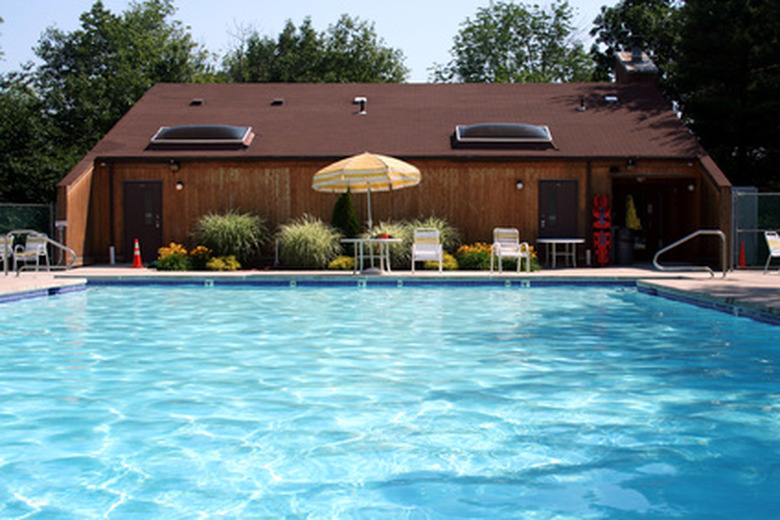Why Are The Steps Yellowing On An Inground Pool?
Dirt, bacteria and other contaminants can find their way into a pool and multiply, causing a variety of problems. One such problem is pool steps that are beginning to turn yellow in color.
Cause
The cause of yellowing steps is most often mustard algae, which can leave powdery yellow, green or brown deposits along your pool walls, steps and in shady spots beneath the water's surface.
Identification
Mustard algae usually brushes off easily, and can often resemble pollen or dirt that has accumulated on the steps, walls or floor. You can tell the difference between algae and dirt or pollen because algae has a slimy feel instead of a gritty one, like dirt. If untreated, the algae will grow in large clumps.
How It Grows
Algae spores can be brought into your pool in a variety of ways, including via wind, rain, or contaminated equipment and swimsuits. The imbalance of pH in the water, sun, warm temperatures and exposure to carbon dioxide as well as improper circulation and sanitation of the pool water can cause the algae to bloom and grow rather quickly.
- Dirt, bacteria and other contaminants can find their way into a pool and multiply, causing a variety of problems.
- The cause of yellowing steps is most often mustard algae, which can leave powdery yellow, green or brown deposits along your pool walls, steps and in shady spots beneath the water's surface.
Possible Problems
Mustard algae can cloud water and give the pool an unclean appearance. It can make swimmers sick because it often contains harmful bacteria. Filters can become clogged by the algae, making them inefficient in adequately cleaning the pool water. The algae also absorbs chlorine, reducing the amount needed to fight off contaminants.
Prevention/Solutions
Algaecides can be used to kill off mustard algae. The most common one contains quaternary ammonium salts, copper salts and colloidal silver. The time it will take to kill off algae depends on how severe the spread of the algae is. A larger outbreak of may require several treatments to fully eliminate the problem.
- Mustard algae can cloud water and give the pool an unclean appearance.
To prevent algae from growing or recurring, keep the pool properly maintained with good water circulation. Keep water filtering at least eight to 10 hours daily, and vacuum and brush the walls of the pool. Test the water at least twice a week, and keep the pH at 7.4 to 7.6; calcium hardness at 200 to 300 ppm; and alkalinity at 100 to 150 ppm.
